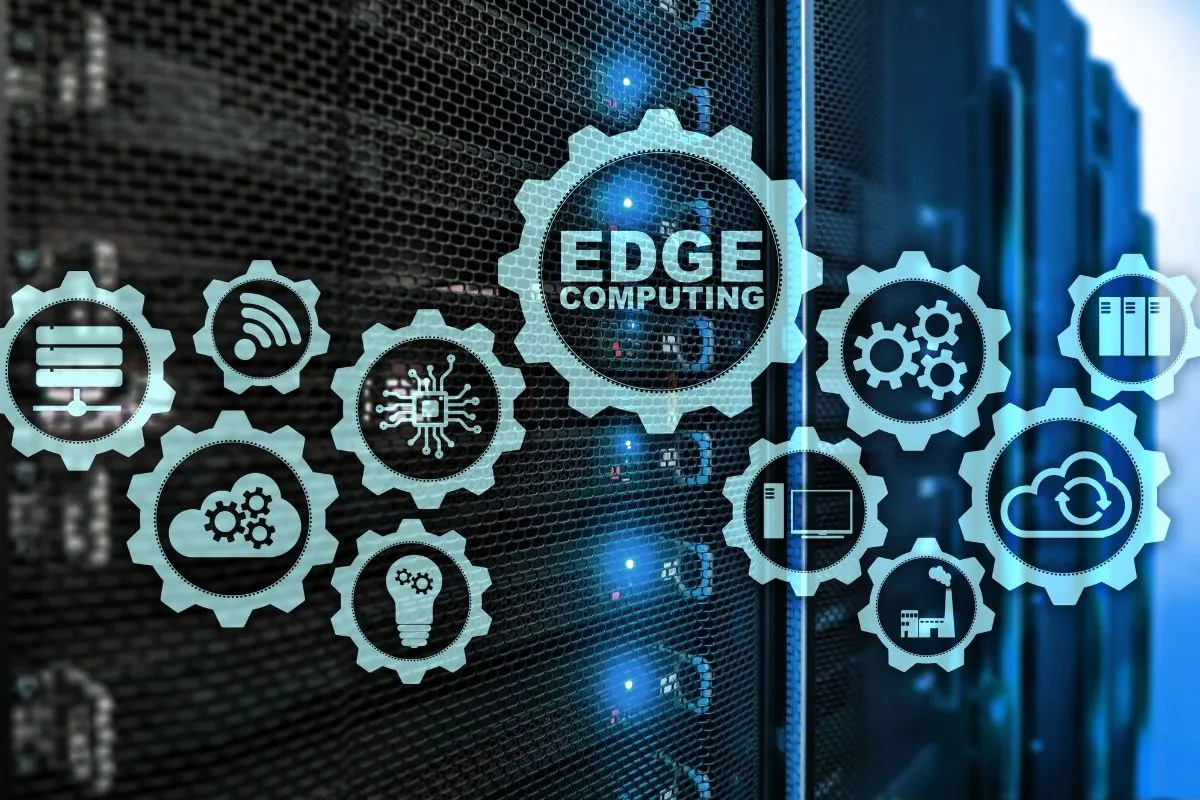Edge Computing is quickly becoming a key player in modern technology, to the extent that many see it as the future of connectivity.
With the rise of devices connected to the Internet of Things (IoT) and 5G networks, like smartphones, security cameras, and Smart TVs, the amount of data being generated is skyrocketing.
To manage this explosion of information efficiently and in real-time, edge computing steps in as the solution, bringing data processing closer to where it’s created. Still not sure what that means? Don’t worry, let’s break it down for you!
What is Edge Computing?

Edge computing processes data close to where it’s generated, usually by IoT devices and sensors. In this case, the ‘edge’ refers to a local device that handles data processing. Such as an IoT Gateway (commonly used in factories or smart cities) or your smartphone, which processes real-time data like location or app usage locally.
Unlike cloud computing, which sends data to large servers owned by tech companies, edge computing decentralizes the process, handling it locally
The benefits are clear: near-instant analytics and responses, without the need to send data to distant servers, which can cause delays (latency) and overwhelm networks with large amounts of data.
Here’s an example to clarify: in a self-driving car, traffic data is analyzed by the car itself, without needing to communicate with the cloud, enabling real-time decision
This model is especially crucial in scenarios where quick decisions are a must. For instance, in the autonomous vehicle we just mentioned, even a millisecond can be the difference in preventing an accident. Similarly, in hospitals, the time it takes to send data to the cloud and receive critical information back about a patient could be life-saving. That’s why edge computing is essential.
In this scenario, Artificial Intelligence is a powerful ally, enhancing local data processing with greater efficiency and intelligence by detecting patterns, reducing latency, and giving more autonomy to devices.
Practical Applications of Edge Computing
- Retail: Smart stores use shelf sensors to track stock levels and alert staff when supplies are running low. Cameras equipped with Artificial Intelligence can even identify suspicious behavior and help prevent theft in real-time!
- Smart Cities: In smart cities, intelligent traffic lights adjust signal timing based on traffic flow, reducing congestion. Sensors installed on roads collect data on vehicle movement, enabling more efficient traffic management.
- Manufacturing: In industry, assembly line machines detect defects in parts as soon as they arise, triggering systems that notify technicians. This immediate response helps prevent waste and minimize production downtime.
- Healthcare: In hospitals, monitors in ICU beds continuously analyze patients’ vital signs, alerting medical staff to any irregularities before the situation worsens, speeding up medical response times.
- Autonomous Vehicles: Lastly, self-driving cars process data from sensors and cameras to react instantly to obstacles like pedestrians or sudden changes in traffic, ensuring safer roads without relying on remote connections.
Edge Computing vs Cloud Computing: What’s the Difference?
The main distinction between edge computing and cloud computing is where the data processing happens. Edge computing processes data on a device close to the source, whereas in cloud computing, the data is sent to large processing centers before being analyzed.
This difference is key for applications that need lightning-fast response times or where internet connectivity isn’t reliable.
Advantages of Edge Computing:
- Lower latency
- Increased bandwidth
- Real-time processing
- Reduced data transmission costs
- Greater data privacy and security
- Less reliance on internet connectivity
- Immediate responses for urgent applications
- More efficient use of local resources
Advantages of Cloud Computing:
- High storage capacity
- Easy scalability
- Lower upfront infrastructure costs
- Remote access from anywhere
- Integration with various services and tools
- Centralized maintenance and updates
- Automatic backups
- Flexibility for handling large data volumes
It’s important to note: these two technologies are not in competition! Edge computing can work alongside cloud computing in a hybrid approach, where non-urgent or large data sets are processed in the cloud, while critical data is handled at the edge.
Why Is Edge Computing Seen as the Future of Connectivity?
Edge computing is revolutionizing industries and unlocking new forms of innovation, especially as 5G connectivity expands and IoT devices like smart lights, fitness bands, and virtual assistants (like Alexa or Google Home) become more common. Supporting this trend, IDC predicts that by 2027, global spending on edge computing will hit $350 billion.
One of the driving forces behind this growth is that edge computing delivers greater operational efficiency. Companies across sectors, from retail to manufacturing, can make decisions based on real-time data, speeding up responses and keeping pace with market demands.
Edge computing’s ability to handle and store data locally is also a critical advantage for companies that must comply with strict data privacy and security regulations.
Additionally, edge computing unlocks more potential for innovation, such as machine learning models that improve over time and adapt to local needs without relying on the cloud. This allows companies to innovate, creating new services and providing a better user experience.






